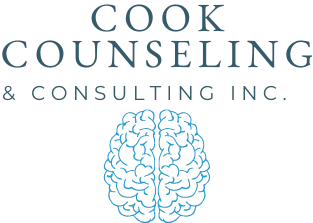Have you ever found yourself doodling or scribbling on a piece of paper after a stressful phone call or during a tiring workday? Whether you choose to observe art or create it yourself, playing with colors is an inspiring and relaxing activity for many people. With over 15 million anxiety cases in the US, anxiety is now considered a common modern-life mental health condition.
Art therapy is the practice of using creative tools to express internal feelings and facilitate the process of self-healing. A systematic review of different comprehensive studies concluded that art therapy could have a positive effect on people struggling with mental health conditions, such as phobias, depression, and anxiety. The best part? Art therapy isn’t only for artsy or creative people but can also be used by unskilled people to deal with mental health conditions. Here is everything you need to know about art therapy for anxiety.
Art Therapy Increases Self-Awareness
Participating in art therapy or engaging in creative pursuits helps you discover new aspects of yourself, a new skill or personal trait that you didn’t know about. Idiosyncratic exercises like drawing or writing using your non-dominant hands increase the sense of self-awareness, which makes it easier for you to identify your feelings and understand the underlying emotions and experiences that are hidden somewhere in your subconscious. In other words, the therapeutic session helps you centralize your thoughts and focus on the present.
Art Therapy Calms the Nervous System
All types of artistic activities are soul-calming, quiet, and meditative, which greatly helps in soothing symptoms of nervousness, irritability, and stress. Having a calm mind will help you to better process your experiences and emotions, making you feel relaxed. According to mental health professionals, anxiety art therapy resolves inner conflicts, bringing your soul to peace during a stressful period.
Art Therapy Breaks the Cycle of Rumination
Overthinking or over-analyzing past events is a major contributing factor to anxiety. Rumination is a repeated cycle that can be impossible to break, and if broken, it can easily trap your mind again. Anxiety art interprets the cycle of rumination, allowing your mind to turn all its attention to the present and think about ways to make today better.
Art Therapy Encourages Self-Expression
While you are busy trying to stay on top of the game in this fast-paced digital world, a storm consisting of trauma, emotional wreckage, fear, and depression is brewing in your mind. Ready to destroy everything the moment you lose control. Even though you might not admit it today, somewhere in your subconscious, you already know about these anxious thoughts and fight with them every day. With the guidance of an experienced and compassionate therapist, anxiety art therapy makes it easier for you to express yourself in a safe manner. This strengthens the connection between your mind, soul, and body and helps you connect with inner emotions and experiences in a healthy way.
Final Thoughts
Art therapy involves using ruminating thoughts to create and interpret art to gain insight. Drawing or coloring your feelings on a piece of paper treats anxiety in people of all ages and stops the rumination cycle, increases self-awareness, calms the nervous system, encourages self-expression, and helps you focus on the present rather than obsessing over the future. Art therapy you can try at home includes making mandala art, coloring, painting, scribbling on paper, writing a gratitude journal, crafting a collage, and creating affirmation cards.
References
Anxiety & Depression Association of America (ADAA). (2022). Anxiety Disorders – Facts & Statistics. Retrieved from Anxiety & Depression Association of America (ADAA).
https://adaa.org/understanding-anxiety/facts-statistics
National Library of Medicine (NIH). (2015). Systematic Review and Economic Modelling of the Clinical Effectiveness and Cost-Effectiveness of Art Therapy Among People with Non-Psychotic Mental Health Disorders. Retrieved from National Library of Medicine (NIH).

